

WIYN Adaptive Optics: Development of a Tip-Tilt System
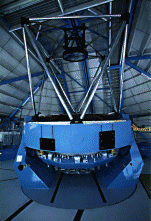
The following illustration was prepared as a viewgraph for presentations to groups unfamiliar with adaptive optics and is presented here as an introduction to WIYN studies.
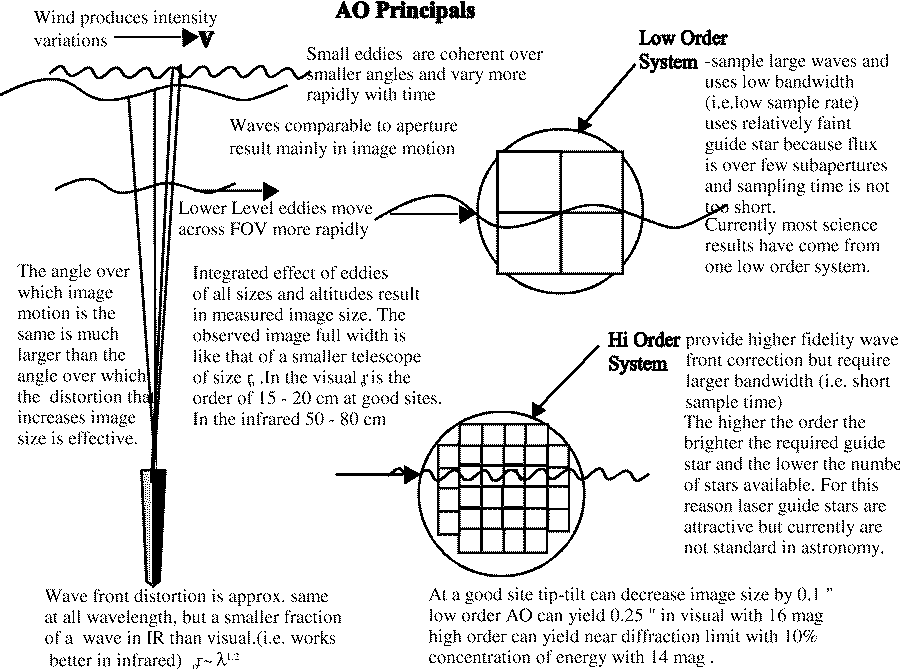
The WIYN Science Advisory Committee (SAC) selected adaptive optics (AO) as a high priority upgrade for the WIYN 3.5 meter Telescope. The reasons that lead the SAC to this conclusion are the following.
A. WIYN is located at an excellent site.
B. WIYN Telescope has excellent preformance characteristics
C. WIYN already has active optics.
D. WIYN provides observing time to the general user community.
E. WIYN supports flexible software and hardware interfaces.
F. WIYN utilizes inovative and flexible scheduling and operation modes.
G. WIYN has a proven track record in research productivity.
H. WIYN Consortiuum is committed to continuous growth.
I. AO on WIYN can provide significant enhancement of WIYN science in
some well defined specific areas of astronomical research.
This WIYN Image illustrates the excellence of the site and telescope.
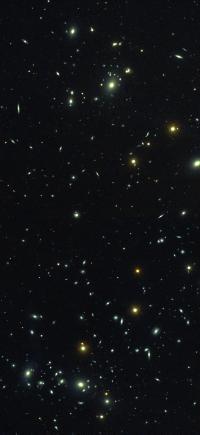
Abell 98 is a rich cluster at a redshift of 0.105. The image above was made from R and I images obtained by Pierce and Tripole at Indiana University. The FWHM for these exposures was approximately 0.45 arcseconds. Image orocessing was done by Nigel Sharp, NOAO
Additional WIYN images may be found linked to the WIYN Home Page and more recent images at Recent WIYN Images
Since start of normal operations, some bright time has been allocated to test and engineering directed towards improvments in all aspects of WIYN performance. During this time observations have been carried out to characterize the WIYN site and telescope. At a recent Strategic Planning Meeting one long-term goal that was set was to continue with improvement projects, with the objective of making the WIYN telescope and enclosure characteristics such that image degradation would be atmosphere limited, not facility limited even under the best seeing conditions. The tests that have been carried out to date have uncovered some problems with the telescope, control system and enclosure which have either been eliminated or are being addressed. These tests also provide the basis for future AO implementation. Among the tests has been the use of the low band width SBIG Tip-Tilt instrument that replace our imager when used. Observations with the SBIG T-T have been carried out on two ocassions with promising results.Among other things it has helped authenticate the gains we can expect from the proposed WIYN Tip-Tilt System. Other test carried out at WIYN include FastTrack measurements, use of accellerometers to help seperate telescope motion from atmospheric image motion. The use of star trails and of speckel camera observations have also been employed. A report describing these tests prepared by Chuck Claver entitled "Epected Performance From WIYN Tip-Tilt Imaging " can be opened as a postscript file or as a PDF file. Expected Performance Postscript version or Expected Performance PDF version
Based on these tests
and the better than expected performance of WIYN the SAC iniated a program
directed towards the development of an
adaptive optics concept for WIYN. The concept chosen was based upon the
successful AO system deployed on the Canada France
Hawaii Telescope (CFHT) on Mauna Kea. Site conditions at WIYN are similar
to those realized at the CFHT. Adoption of a proven
technology promises shorter development time, lower cost and knowledge
of the expected performance. The system is characterized
as a low order, natural guide star adaptive optics module. The order of
an AO system is determined by the number of sub apertures
over which corrections of the wave front can be made. The CFHT AO employed
19 sub apertures. This is regarded as low
order. To approach diffraction limited performance several hundred sub
apertures may be required, although the requirements ease
as the wavelength region moves to the infra-red. Natural guide stars refer
to the use of a star close to the field of interest bright
enough to sense the deformation of the wavefront that is to be corrected.
The higher the order the closer this guide star must be to
the optical axis. The field over which corrections can be achieved for
this system is the orderof 10 to 15 seconds of arc and the guide
star should be the order of 13 or 14 th magnitude in the visual and red
region of the spectrum. The number of guide stars available
oversuch a field is very small. Again this condition is improved as one
moves to the infra-red. David Vaughnn, the NOAO appointed Project
Manager, enlisted the participation of Derrick Salmon, Project Manager
for the CFHT program in developing a design, tim e
line and budget for our AO system. The resulting system did not provide
the match between on-going WIYN science programs that appeared
to justify the considerable expense and length of time required. In particular
most WIYN programs were utilizing the relatively
wide field provided by WIYN, over the small isoplanatic patch limited the
number of guide stars severly in the spectral region
from V to J. It was felt that in order to fit the imaging to the science
goals it would be necessary to move to the near infra red and to
consider laser guide stars. This would increase both costs and time substantially.
On the other hand the gains that could be expected
from a relatively inexpensive tip-tilt system with near IR capabilities
for WIYN was very promissing. A phased
program of image
quality improvement was therefore initiated in which the first phase would
include only simple tip-tilt corrections and an extension
into the near IR. This program has lead to the project described below.
| WIYN
is currently developing a tip-tilt system which, based upon extensive testing,
will significantly enhance image quality. The
WIYN telescope is a modern 3.5 meter optical telescope located on Kitt Peak in Southern Arizona. WIYN is a unique collaboration between the University of Wisconsin, Indiana University, Yale University and National Optical Astronomy Observatories (NOAO). The telescope, enclosure and site are also unique, all resulting in outstanding image quality and research productivity. The image quality of ground based optical telescopes is degraded by a combination of atmospheric turbulence and local heating of the terrain and telescope enclosure. In addition, thermal effects within the enclosure and above the surface of the mirror, distortions in the telescope optics, and image motion due to pointing disturbances contribute to the final image quality. WIYN is located on the south west ridge of Kitt Peak at one of the optimum sites on the mountain. To take advantage of this the enclosure and telescope are thermally controlled so as to track ambient temperature very closely, the primary mirror is temperature controlled to approximately 0.2 C of the desired setpoint of 0.5 C below ambient, and the primary mirror figure is controlled by 66 active axial actuators. As a result of this active optics system, control of the local environment and location of the telescope the image degradation is primarily a result of upper atmospheric turbulence of which measurements indicate that for an aperture of this size image motion is a major contributor. The WIYN tip-tilt system has the potential of reducing median seeing of 0.8" to 0.5" at R and produce nearly diffraction limited images at H. For further details on the WIYN telescope and site characteristics see "WIYN Active Optics-APlatform for AO" in the proceedings SPIE vol.3353. The system proposed
is a result of careful investigations of low-order adaptive optics, as
implemented on CFHT for example. Our study indicates that with the existing
active optics WIYN had less to gain by a low order system than previous
generation
|
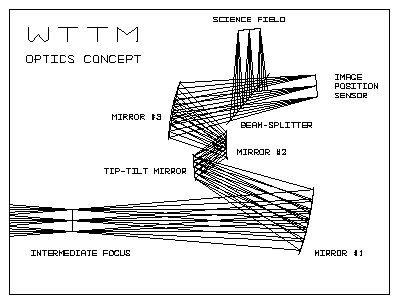
Figure. 1 Optical Concept for the WTTM |
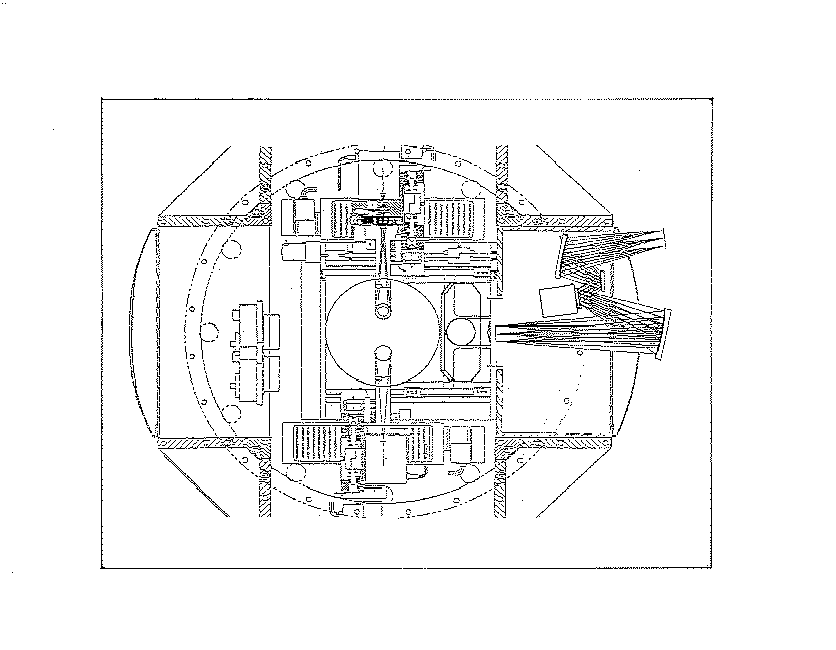
Figure. 2 Possible
location of WTTM within the IAS
Chuck Claver, Project Scientist
David Vaughnn, Project Engineer
Earl Pearson, FEA Analysis Engineer
Ron Price, Opto-Mechanical Engineer
Phil Daly, Software Engineer
Rich Gomez, Mechanical Designer
Rich Reed, Electrical Engineer
Dave Dryden, Electrical Technician
Al Camacho, Optician
Other contributing people include:
Dave Sawyer, WIYN Site Manager
Charles Corson, WIYN Engineer
Art Code, Astronomer
Taft Armandroff, Astronomer
WTTM Project and Working
Group Members may access
WTTM
Design Status
For more information
contact:
acode@noao.edu,
cclaver@noao.edu
WIYN Observatory * 950 N. Cherry Ave * PO Box 26732 * Tucson, AZ 85726 * Phone:(520) 318-8135 * Fax:(520) 318-8487